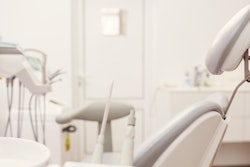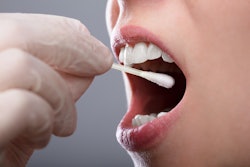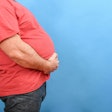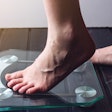
A high body mass index (BMI) combined with low muscle mass is linked to poor oral health in older post-stroke patients, highlighting the importance of addressing dental and overall health in this population. This study was published on April 21 in Gerodontology.
Additionally, among post-stroke patients, the relationship between oral health and sarcopenic obesity was discovered to be stronger than a link between simple obesity and oral status. Interventions addressing activities of daily living (ADL) and quality of life (QOL) can improve the oral and overall health of these patients, the authors wrote.
"This finding is novel and clinically relevant because it suggests that impaired oral status may reflect changes in body composition in the trajectory of geriatric syndromes, such as sarcopenic obesity," wrote the authors, led by Ai Shiraishi of the Kumamoto Rehabilitation Hospital Center for Sarcopenia and Malnutrition Research in Japan.
To explore the potential connection between body composition and oral health among older adults who have had strokes, 760 patients undergoing post-stroke rehabilitation were included in this retrospective cross-sectional study. The median patient age was 71.
Oral health was assessed using the revised oral assessment guide (ROAG). Of the total number of patients, 34 had sarcopenic obesity, according to the study.
Notably, impaired oral health was strongly linked to sarcopenic obesity, almost as much as sarcopenia but more than obesity alone. The analysis revealed that ROAG scores were significantly associated with sarcopenic obesity (β= .091, p = .023). Additionally, obesity alone (β= .084, p = .044), and sarcopenia alone (β= .081, p = .037) were tied to oral health scores, the authors wrote.
Inflammation, malnutrition due to oral problems hindering chewing and swallowing, and reduced physical activity may be the mechanisms behind this association, they wrote.
The findings suggest that interventions addressing oral health and sarcopenic obesity may yield better results than targeting either condition alone. Routine health screenings for individuals with sarcopenic obesity should include oral health assessments to detect and manage potential oral issues. Furthermore, convalescent rehabilitation programs should use therapies such as physical and occupational alongside nutritional and oral care to address ADL and QOL, they wrote.
However, the study had limitations, including its single-center design. Future research should confirm whether similar results can be replicated in other populations, they wrote.
"Given that both sarcopenic obesity and oral management are an increasing concern in geriatric medicine, characterising this association would help improve prevention and management strategies, provide insights into the underlying pathophysiology, improve patient outcomes and reduce healthcare costs,” Shiraishi et al concluded.




















